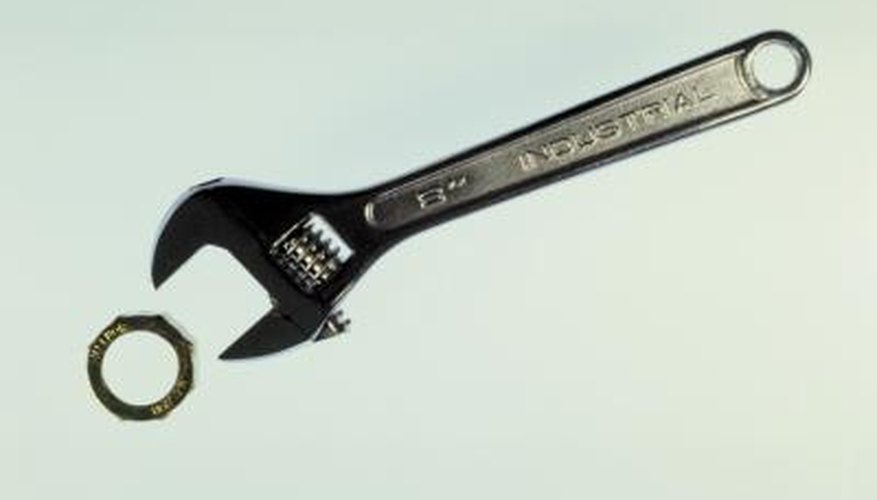If you've ever found yourself puzzled when trying to figure out what size nut you need for a bolt, you're not alone. The many different sizes can be overwhelming and confusing. When you learn that there is a US standard measurement system and a metric measurement system, you might all but give up. Regardless of these variations, measuring the size of a nut doesn't have to be a mystery. A nut has five ways that it can be measured. When matching a nut to a bolt or a wrench to a nut, two of the ways to measure solve most of the mating problems.
- If you've ever found yourself puzzled when trying to figure out what size nut you need for a bolt, you're not alone.
- When matching a nut to a bolt or a wrench to a nut, two of the ways to measure solve most of the mating problems.
Lay the nut on a flat surface so that the hole lays flush.
Place the end of a measuring tape on one of the flat sides of the nut's outer perimeter.
Stretch the tape measure across the nut's diameter to the flat-side directly across from the one your pulling from. If the nut is metric, count the number of lines on the tape measure to find the measurement. If you count 9 lines, the size is a 9-mm (millimetre) nut. If the nut is US standard, count the smallest lines on the tape measure in sixteenths. Add the sixteenths together to find the size. If you count 11 lines, the size of the nut is 11/16. You can also measure from point-to-point to find the "Whitworth system" measurement. Instead of measuring from flat to flat, you measure from point-to-point on the hexagon. These two measurement methods help you know what size wrench or socket to use on a nut.
- Place the end of a measuring tape on one of the flat sides of the nut's outer perimeter.
- If the nut is US standard, count the smallest lines on the tape measure in sixteenths.
Lay the nut down as you did in Section 1. Set the end of the tape measure at one side of the inner threads of the nut.
Stretch the tape measure to the other side of the inner threads of the nut.
Count the lines to find the diameter of the threaded hole. Measure across the widest opening the threads make. This measurement will help you match the thread diameter of the nut with the thread diameter of the bolt.
- Lay the nut down as you did in Section 1.
- Count the lines to find the diameter of the threaded hole.
Count the number of threads along the inside thickness of the nut. Use a magnifying glass and a pin to keep track of the threads.
Write the total down on a piece of paper.
Figure the threads per inch of nut thickness. A nut with 16 threads per inch has coarse threads, while a nut with twenty threads per inch is fine thread. If the nut is 1/4-inch thick and that 1/4-inch has 4 threads, the nut is coarse-threaded. If the nut has five threads in that 1/4-inch thickness, the nut is fine-threaded. To measure nut thickness, hold the nut between your fingers and measure the perimeter parallel to the nut's hole.
TIP
Some nuts have right-hand threads while others have left-hand threads. If you can't get a nut off or get it to go onto a bolt, try turning it in the opposite direction and maybe it will come off. Right-hand threads turn clockwise (right) to tighten and counterclockwise (left) to loosen. Left-hand threads turn counterclockwise (left) to tighten and clockwise (right) to loosen. Another way to find the nut size is by trying a bunch of different wrenches on the nut until one fits.
